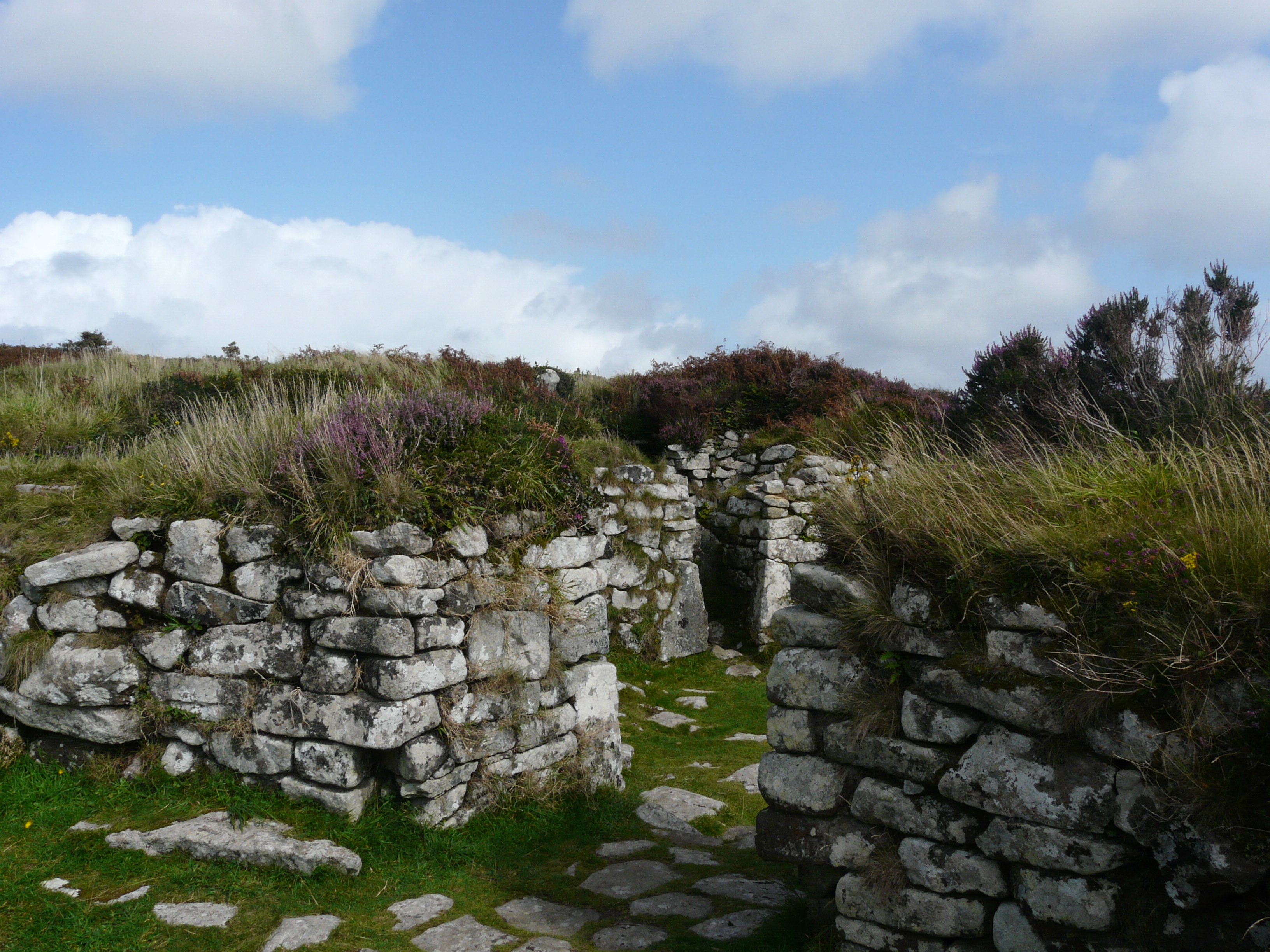Chysauster is an ancient settlement and scheduled monument on the upper slopes of the Carnaquidden Downs in the Penwith District of southwest Cornwall in England. The scheduled site includes a group of courtyard houses, a fogouUnderground passage or tunnel constructed in the Iron Age by digging trenches and lining the sides with drystone walling. , a round cairn and the remains of a prehistoric field system. The settlement was in use from the late Iron Age until Roman times.
The site is managed by English Heritage, and is accessible to the public.
Background
Courtyard houses were developed in the Roman period during the second to fourth centuries AD in southwest England. More than 110 examples have been recorded on the Penwith peninsula in far west Cornwall. Another on the Isles of Scilly is the southwest limit of their distribution. They are highly localised and adapted to the windswept conditions of the area. Courtyard houses are oval in shape with a central courtyard. Their thick coursed rubble walls contained storage chambers and rooms that opened into a small central unroofed area. Excavations revealed paved and cobbled floors, hearths, stone partitions, threshold and door pivot stones and slab-lined and covered drains. Some courtyard houses were built on the site of earlier round houses.[1]
FogousUnderground passage or tunnel constructed in the Iron Age by digging trenches and lining the sides with drystone walling. date from the Iron Age, and were in use until Roman times. They are underground passages lined with stone often with side passages or rooms, and could be 30 metres (98 ft) in length and 2 metres (7 ft) wide. All the twelve known fogous are found in the far west of Cornwall. Many are associated with courtyard houses. Whether fogous were built as refuges, entrances, or for storage or ritual shrines, is unknown.[1]
History
The courtyard house settlement is on the slopes of Carnaquidden Downs. The surrounding landscape has provided evidence of an Iron Age settlement, and exploitation since the middle Bronze Age.[2] The ancient settlement, built during the second to fourth centuries AD, includes courtyard houses, a fogou, a round cairn and part of a prehistoric field system. At least ten courtyard houses survive and eight of them are in two rows. Their stone walls are about 30 metres (98 ft) in diameter and up to 2.1 metres (6.9 ft) high.[1] The houses have similar layouts, an entrance leading into the courtyard which was about 8 metres in diameter. Around it are two or three rooms, a round room opposite the entrance, a long narrow room and a some houses have a small round room.[2]
The fogou is about 16 metres (52 ft) long and partially buried and blocked. The prehistoric field system has 1 metre (3 ft) high terraces or lynchets (a ridge or ledge formed along the downhill side of a plot by ploughing in ancient times) and boundary banks, walls and trackways and the round cairn. The settlement was agricultural as evidenced by surviving garden plots and the field system. Chysauster ancient settlement is the largest and best preserved example of this rare type of settlement.[1]
Excavations
The site was excavated by W. C. Borlase in 1873.[2] He uncovered drains, paving, hearths, roof and door post socket stones and artefacts such Iron Age pottery, fragment of slate, water worn pebbles of quartz, a piece of tin ore and a copper alloy spoon. Some houses were reconstructed but the fogou was blocked. Another fogou recorded in the mid-19th century is probably the sunken way leading to the settlement. A Bronze Age burial cairn was discovered built into a field system wall.[1]
The monument is an important information source on the unique pattern of settlement in west Cornwall between the Iron Age and Roman times. It is scheduled under the Ancient Monuments and Archaeological Areas Act 1979 as being of national importance.[1][2]



